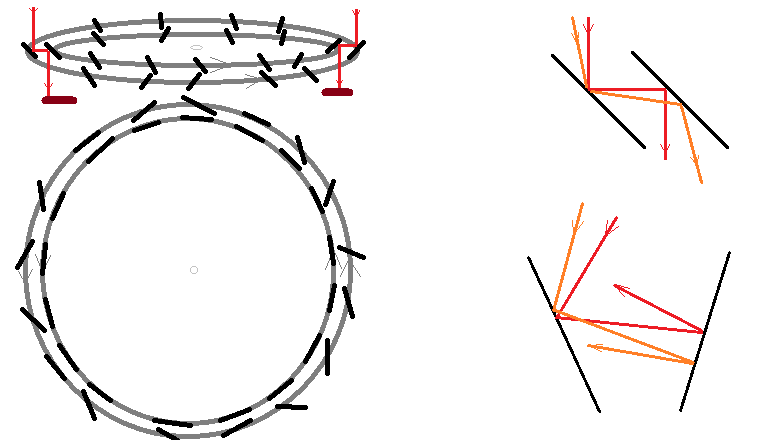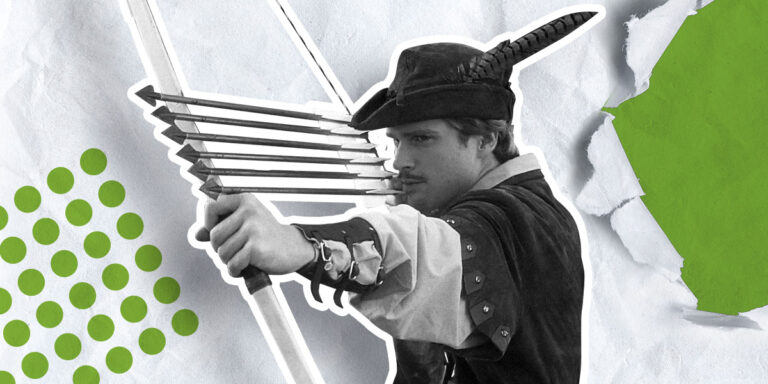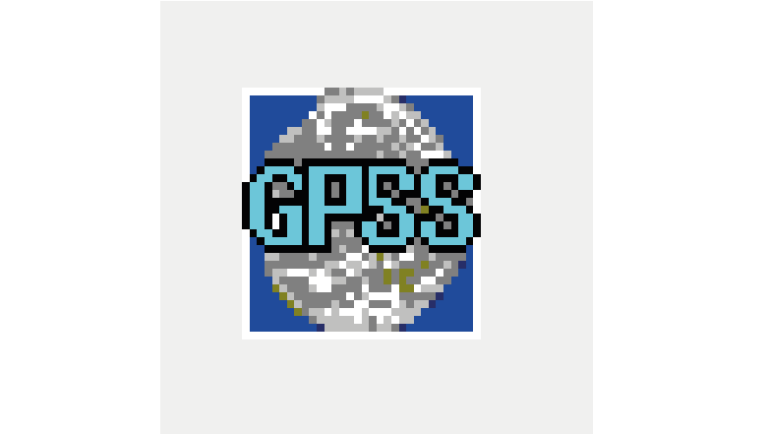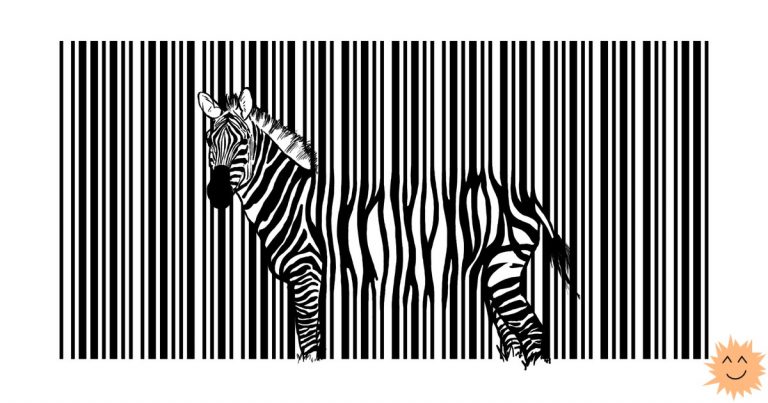All-round view system with one video camera and rotating mirrors, v. 2
I write like RFC, criticize, because I studied physics and mathematics for a long time, but the ideas seem very promising.
Now they usually put a lot of cameras around the perimeter of the protected area or “fisheye” on the bumper of a car with unpleasant distortions. Look in all directions – you won’t get enough cameras, especially if they are not wide-angle, high-quality.
After all, from the middle of the object from above, in principle, you can survey everything around and even up / down to the full sphere (excluding the body of your object) with a few Hz with a small “gadget” (mirror sensor, ZD) and suggest the most interesting / dangerous objects using neural networks, determine the distance before anyone, its dimensions, calculate the speed, direction and current danger. There is a job for all IT people! 😉 Everything looks very simple:

At the top left is a schematic side view of the ZD, at the bottom left is a top view, on the right is an explanation of the physical principle for non-blur exposure.
We have two large coaxial monotonously rotating rings with mirrors (KKZ, gray), rotating with the same angular velocity in one direction, mirrors (Z, black) are rigidly attached to them: from the external KKZ they “look” in different directions, which we need, they receive light beams from there (PS, red) and reflect to the middle, to the internal KKZ, 3 of which are located more regularly and redirect the PS from the side down, to the camera (cameras, K, dark red).
Everything can be stamped from silver-painted plastic, but with perfectly smooth surfaces, cost inexpensively, because the main thing here is fast K and smooth rotation, even cheap smartphones can come up below, having figured out the rotation speed of the KKZ over time and adjusting their frame rate, and even controlling the rotation of the KKZ by Bluetooth. As well as communicating with each other, comparing their pictures for the stereo method and launching recognizing neural networks.
In principle, two KKZ can be “glued” into one by placing on it several prisms with two reflective faces in a circle, instead of neighboring Z on a pair of KKZ. If the usual K is of the order of several millimeters, then such a set of KKZ will take several centimeters in diameter, and in height – the size of the pupil of K.
The rotation speed can be any, modern technologies will allow, there are many Hz in motors. It all depends on the abilities of K.
Let’s move on to the right side of the figure, the proof of the non-blurring of the image inside K on its photosensitive matrix (M) when PS is reflected from a pair of rotating Z. There is a law in optics – an ordinary lens collects all parallel rays passing through itself into one point at its focal length. Therefore, if the same PS moves a little in a parallel way after several reflections, then this is not scary, as long as it hits the lens, then it will refract and hit the same pixel on M. (There is a difficulty with nearby objects – when the observer shifts, the PS changes its angle from them. A fly, for example, by 20 cm will be blurry, although suddenly dangerous;)
Instead of rotating a pair of mirrors without loss of generality, let us leave them in place and change the angle of the incoming PS. We need to leave the corner at the exit. We have 2 PS – red and orange. At the top right, their reflection from parallel Z, everything is obvious there, the angle between the outgoing PS is exactly the same as at the input. And if the mirrors are non-parallel (right-bottom), then everything is the same – after the first reflection, the angle between red and orange will not change, and after the second, and no matter how many more there are later … Indeed, if we observe in the nearest mirror there are many more following mirrors, then the field of view of the last one will reach us unchanged, only, perhaps, reflected relative to a certain line.
Turning now back to the global coordinate system, we will see that in the process of rotation of the pair Z, the PS emerging from it from the observed object will always be parallel to itself to the initial one.
This was for a two-dimensional case, and we have a three-dimensional one – from somewhere below or above, PSs can also come in handy, and you can observe a full sphere. Our 2 considered black lines-mirrors will represent the intersections of the Z pair with the horizontal plane. The PS vector in this case can be divided into 2 components – horizontal and vertical. When the KKZ rotates around the vertical axis, the vertical part of each piece of the PS trajectory will remain unchanged, while the horizontal part is positively considered above.
The second reflection vertically downwards will definitely be interesting for us – the entire horizontal vector of the PS will be sent by the internal Z vertically downwards, to K + M. But since horizontally, we saw the parallelism of the outgoing PS to itself during the rotation of the Z pair, then this PS will also go down parallel to the primary one and be fixed on M without blurring. Well, except for the trembling of the entire system when driving, this is a separate problem.
Let’s look up from K: she will see fast-flying stable images of different pieces of the surrounding reality, progressively and evenly colliding with each other, devouring a neighbor. Those. smear can be on their borders, addition of 2 pictures. If the exposure time M is equal to the time of flight of one pair of Z over K, we will not record anything good. You can separate pairs of 3 gaps and blackness, as well as reduce the exposure time so that the blur is not on the whole M.
K and M must know when the next pair of Z “shines” us, start and stop the exposure.
If the lighting conditions change, then the angular speeds of rotation of the KKZ can be changed.
For real-time “stereo” and its excellent “goodies”, you can have pairs of Z on opposite edges of the KKZ, looking in the same direction and giving binocular vision for a pair of K with a sufficiently large base, even wider than our eyes if necessary, and then compare all objects and calculate distances, sizes, speeds, directions…
Another interesting task is to reduce the number of Z looking at a certain level vertically. So that, for example, four Z survey the most capacious horizontal sector in height, 3 – from 30 degrees … It will definitely need 2 KKZ, and the outer one rotates several times faster than the inner one, where the Z are rigid, and on the outer they also rotate in the opposite direction , so that, passing over K, be parallel to the 3 of the internal KKZ and send the correct PS to it. So we save a lot of space if we have miniature very precise engines.




